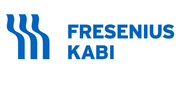Rada M. Grubovic Rastvorceva
Blood Supply Management WP Chair, Consultant in Transfusion Medicine and Hematology, SPM, European Directorate for the Quality of Medicines and HealthCare (EDQM), Council of Europe, Strasbourg, France; Associate Professor, Faculty of Medical Sciences, University Goce Delcev, Stip, N. Macedonia
Assoc. Prof. Dr. Rada Milos Grubovic Rastvorceva, MD MSci PhD is Consultant in Transfusion Medicine and Hematology, Scientific Program Manager at European Directorate for the Quality of Medicines and HealthCare (EDQM) at the Council of Europe, Strasbourg, France and Associate Professor at the Faculty of Medical Sciences at Goce Delcev University, Stip, N. Macedonia. Dr. Grubovic has been President of Macedonian Society for Transfusion Medicine and Chief Medical Officer of Institute for Transfusion Medicine of RNM in Skopje, N. Macedonia. Dr. Grubovic was awarded with Princes of Wales Memorial Award by the British Blood Transfusion Society, Fulbright Scholarship by the US Department of State, Award for Scientific Contribution in the Field of Medical Sciences and Certificate of Recognition for Scientific Productivity by the Faculty of Medical Sciences, University Goce Delcev, Stip, N. Macedonia, Certificate of Recognition from Macedonian Medical Association and many other domestic and international recognitions. She has more than 20 years working experience in the transfusion medicine field and extensive research experience in blood donation, apheresis, blood safety and supply, cellular therapy, transplantation medicine, clinical transfusion, quality management and etc. She gained additional research experience at University of California Los Angeles (UCLA), USA and King’s College Hospital, London, UK. She was National Project Manager of the EU IPA project “Strengthening of the Blood Safety System” 2013/14 and collaborator of European Blood Alliance (EBA) at EU projects SUPPORT-E and SUPPLY. Dr. Grubovic was a national representative in European Committee on Blood Transfusion at EDQM, Council of Europe and in European Commission on SoHO (bilateral screening chapter 28) and institutional representative and board member of EBA. She was advisor of Macedonian Minister of Health 2012-2015 and was a founder and Project Leader of National COVID-19 convalescent plasma program (PI – trial NCT04397523). She participated in numerous research projects and authored and coauthored more than 250 scientific publications. Dr. Grubovic is a member of ISBT, AABB, ISCT, MMA, MMC, MSTM and editorial board member and reviewer in more than 20 international medical journals.
https://www.linkedin.com/in/radicagrubovic/
email: [email protected]

















